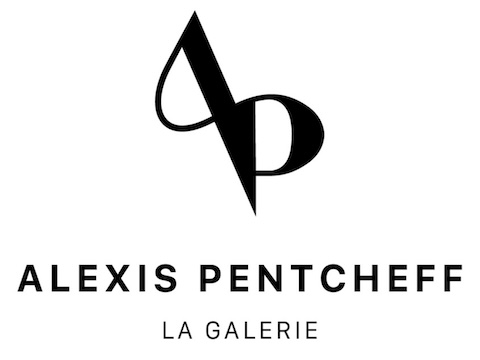Félix Vallotton was born in Lausanne in 1865. A painter, engraver, illustrator, art critic and writer, Vallotton expressed a strong taste for the arts from an early age. He attended the Académie Julian in Paris, which he continued when he was accepted at the Ecole des Beaux-Arts in 1883.
Vallotton nevertheless remained deeply attached to his native country, Switzerland. He stayed there regularly and met the artists Ernest Bieler, Joseph Reichlen, Fernand Gaulis, Jules Blancpain, Charles Maurin and the engraver Félix Jasinski. This duplicity of identity will remain important for both his career and his personal life.
The young artist first became passionate about portraiture in a style largely influenced by academicism and the masters he discovered at the Louvre in particular. However, he approached painting with a great deal of freedom of interpretation, despite his teachers' displeasure. The painter finally left the Académie Julian and found himself in a precarious economic situation in 1890. During this period, he became increasingly interested in woodcutting, an ancestral technique that he approached in a resolutely new way, attracting international attention.
In 1891 Vallotton exhibited eleven paintings at his first Salon des Indépendants and had his most prolific year as an art critic. The following year he participated again but this time with woodcuts. The Salon de la Rose + Croix allowed him to be noticed by a group of visionary artists, the Nabis, in 1892. He joined Vuillard, Bonnard and Sérusier a year later and was nicknamed the "Foreign Nabi". The group wished to take a new look at reality by giving painting its autonomy and spirituality. Their name, synonymous of prophet, already announces this will to propose a reinterpretation of the pictorial space in its totality, to position itself as instigator of an original subjective reality, of new worlds. The painting becomes the ground of the imaginary, a field of experiments without limits.
In 1893, his work The Bath in the Summer Evening - now considered one of his masterpieces and housed in the Kunsthaus Zurich - was laughed at by the public. In this painting, female nudes guided by a flattened perspective populate a strange landscape to the rhythm of the artist's fantasies. The aesthetics of Vallotton's work is then carried by a new synthetic figuration. The painter officially appeared alongside the Nabis at the Fourth Exhibition of Impressionist and Symbolist painters at Le Barc de Bouteville that same year. His pictorial research was not yet limited to painting, he continued his activities as an illustrator for the newspaper "Pan" in Berlin, "Jugend" in Munich and became artistic director of the magazine "Prince Poniatowski" in 1895. Vuillard, with whom he developed a sincere friendship, allowed him to meet Thadée Nathanson, co-founder of the Revue Blanche. It was then that Félix Vallotton became its regular illustrator from 1895 to 1902. As a multi-faceted artist, his work for the press and the publishing world allowed him to achieve a new financial stability.
The painter participated again in an exhibition dedicated to the Nabis at Ambroise Vollard in 1897. During this period, he produced important series of portraits, interior scenes and nudes. In 1899 Vallotton married the daughter of the famous art dealer Alexandre Bernheim, Gabrielle Rodrigues Henriques, which marked a turning point in his career. He became a French citizen in 1900. He gradually concentrated on his first love: painting, which he exhibited at Durand-Ruel in 1899, then at Bernheim-Jeune in 1900. His works are singular, modern. Of a great precision, the drawing cuts the form under the influence of the engraving. The fineness of the color with soft and cold tones depicts an elusive atmosphere subject to the painter's haunting desires. The purchase of a camera will also considerably influence his work and give birth to his "composed landscapes". He thus arranged the elements of several photographs to form on the canvas an idealized landscape, captive of his imagination, reducing the motif to his painting.
He visited Cannes, Nice, Marseille, but also the villa Beaulieu Honfleur in 1901. Seduced by the landscapes of the South and their gentle warmth, he exhibited views of Marseille, notably at the Salon des Indépendants. In 1903, an important exhibition was held at Bernheim-Jeune with seventy-five of his paintings. He presented works at the Vienna and Berlin Secession. Between 1904 and 1906, the artist traveled to Holland and Belgium while exhibiting in Germany and then at the International Exhibition in Venice and at Paul Cassirer. At the same time, his brother Paul began to sell his works in Switzerland in 1907. Vallotton became friends with Henri Manguin, Albert Marquet, Pierre-Narcisse Guerin and Pierre Laprade. At the inauguration of the Salon d'Automne in 1903, of which he was a founding member, the French government bought his first painting. He exhibited there until his death.
As his travels intensified, he exhibited at the Toison d'Or in Moscow and produced an important series of nudes. His success became certain. The famous collector Hahnloser, with whom he stayed in 1909, bought him a set of paintings, which allowed him to achieve greater financial stability. His first solo exhibition took place in Zurich that same year, at the Kunstkerhauss, where Eugène Druet became his regular dealer. The Kunsthaus in Zurich bought his portrait of an old man, Mr. Ursenbach, while he was still very well represented in Switzerland by his brother and the Hahnlosers in particular. From 1909 onwards he spent every summer in Honfleur and produced numerous views there. He was also presented at the great London exhibition Manet and the Post-Impressionists in 1910.
During the First World War, the painter who wanted to enlist was refused. He cut all relations with Germany and his income dropped drastically.
Félix Vallotton died in Paris in 1925 at the age of sixty.

La Biennale Paris
13 September 2019 - 17 September 2019

Antibes Art Fair
18 April 2015 - 4 May 2015
